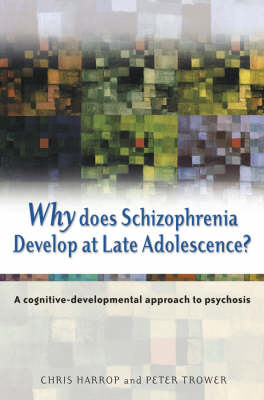
Why Does Schizophrenia Develop at Late Adolescence? – A Cognitive–Developmental Approach to Psychosis
John Wiley & Sons Ltd (Verlag)
978-0-470-84878-4 (ISBN)
- Titel ist leider vergriffen;
keine Neuauflage - Artikel merken
Governments around the world have given priority to "early intervention", i.e. the early diagnosis and treatment of young adults with psychotic symptoms. One of the main problems with this approach, is that only a small proportion of these young adults can be expected to go on to develop schizophrenia, yet all the treatment regimes are derived from work with adults who have had full psychotic episodes. Why Does Schizophrenia Develop at Late Adolescence? proposes a controversial new model of how schizophrenia develops in late adolescence and presents clinical material aimed at influencing the way psychosis is treated, building on a state-of-the-art reassessment of the field.* A major reconceptualisation of how schizophrenia develops* A controversial approach* Early intervention programmes are now extremely widespread, so there is much interest in the area and how best to treat this serious psychotic disorder
Chris Harrop is the author of Why Does Schizophrenia Develop at Late Adolescence?: A Cognitive-Developmental Approach to Psychosis, published by Wiley. Peter Trower is the author of Why Does Schizophrenia Develop at Late Adolescence?: A Cognitive-Developmental Approach to Psychosis, published by Wiley.
Why does schizophrenia develop in late adolescence? Section One: What is this schizophrenia? Schizophrenia: what is it? Biological Disease or Psychological Problem? Who is right? Why young men? What the hell is going on in late adolescence? Why might some People be blocked? Section Two: Psychosis and the Self. The Crisis of the Adolescent Self. The Mystery of Self: Why have it? What is it? The Potential and the Limit. How is the Self constructed? The Insecure Self (Le Neant). Section Three: Personal Accounts. How we asked People to give their Personal Accounts. Anger and Catastrophes. Further results: Linking Conflict Interactions to Symptoms. Peer and Romantic Conflicts. Section Four: What can be done? Therapeutic Ideas. 'Character-based' training: de-idealising, egocentricity and theory of mind. Overcoming Interpersonal Blocks to Self Construction. Overcoming Symptoms.
| Erscheint lt. Verlag | 15.8.2003 |
|---|---|
| Verlagsort | Chichester |
| Sprache | englisch |
| Maße | 154 x 229 mm |
| Gewicht | 354 g |
| Themenwelt | Geisteswissenschaften ► Psychologie ► Persönlichkeitsstörungen |
| Geisteswissenschaften ► Psychologie ► Psychosen | |
| Medizin / Pharmazie ► Medizinische Fachgebiete ► Psychiatrie / Psychotherapie | |
| Sozialwissenschaften ► Soziologie | |
| ISBN-10 | 0-470-84878-2 / 0470848782 |
| ISBN-13 | 978-0-470-84878-4 / 9780470848784 |
| Zustand | Neuware |
| Haben Sie eine Frage zum Produkt? |
aus dem Bereich


